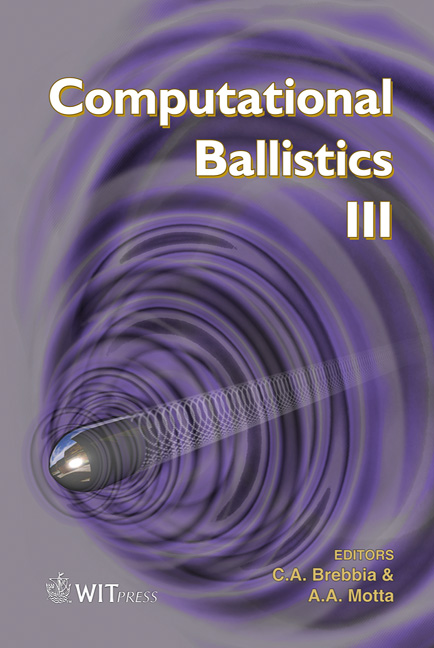On The Linkage Of Impact Damage To Modeling Of Ballistic Performance
Price
Free (open access)
Transaction
Volume
45
Pages
10
Published
2007
Size
4,540 kb
Paper DOI
10.2495/CBAL070081
Copyright
WIT Press
Author(s)
J. M. Wells
Abstract
The assessment of terminal ballistic performance has historically been strongly biased toward the penetration resistance of the target architecture and its component materials. However, penetration modeling alone does not provide sufficient knowledge to create new and/or improved armor ceramics materials capable of mitigating and preventing penetration. It is apparent that physical impact damage occurs prior to, and strongly affects, the occurrence and progress of the penetration process and as such impact damage needs to be explicitly included in ballistic performance modeling. One aspect of this situation has been the difficulty in attaining a detailed volumetric characterization of actual sub-surface bulk impact damage. The x-ray computed tomography, XCT, diagnostic and 3D visualization techniques presently appear as the only effective nondestructive evaluation, NDE, modality for high resolution volumetric impact damage interrogation, spatial characterization, quantification, visualization, and 3D analysis. An overview of the current XCT impact damage diagnostic capabilities and results are discussed along with some remaining challenges and the need to incorporate 3D physical damage features into future computational models for predictive ballistic performance. Keywords: X-ray Computed Tomography, XCT, damage diagnostics, ballistic impact damage, computational modelling, terminal ballistics, NDE, cracking, embedded fragments, impact-induced porosity. 1 Introduction The historical focus of ballistic computational modeling on the penetration phenomenon is understandable and logical in that no friendly armor system should be penetrated. However, penetration-only based models lack the
Keywords
X-ray Computed Tomography, XCT, damage diagnostics, ballistic impact damage, computational modelling, terminal ballistics, NDE, cracking, embedded fragments, impact-induced porosity.




